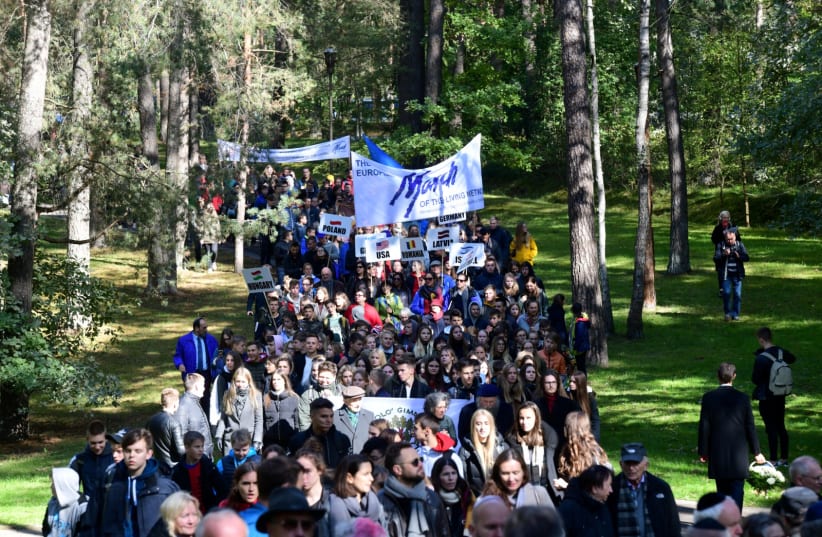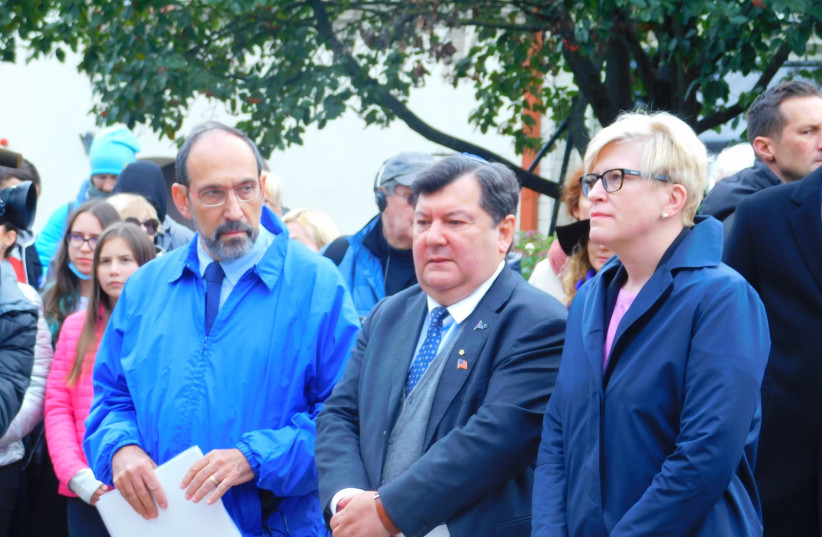Members of the Lithuanian government, the Lithuanian Jewish community and the International March of the Living will hold a special ceremony Thursday in honor of the National Memorial Day for the Genocide of Lithuanian Jews.
The ceremony will see the participants march from the Rudninku Square in Vilnius, which was the site of the Jewish ghetto during the Holocaust and concluded at Ponar, the site of a mass grave.
The march comes following the 78th anniversary of the liquidation of the Vilnius ghetto, further decimating Lithuanian Jewry. It also serves to mark 80 years since the beginning of the Holocaust in the Baltic state and the rest of Eastern Europe, which only began following the Nazi takeover after the launch of Operation Barbarossa in 1941.
"What happened is not a tragedy of the Jewish people, it is a tragedy of all the peoples who lived and live in Lithuania and the whole state, of course, and the tragedy of the whole world, because the world has lost its unique colors, the world has lost its great potential, the world has lost perhaps discoveries and solutions," Lithuanian Prime Minister Ingrida Šimonytė said in a statement. "However, such catastrophes can happen again – outbreaks of violence, incitement to hatred have not gone away."
Lithuanian MP Emanuelis Zingeris, who is a member of the Jewish community, initiated the "Memory Road 1941-2021" project with March of the Living to commemorate the decimation of Lithuanian Jewry.
"There are more than 200 Holocaust mass murder sites and we organized commemorative marches in most of those places that begin in the central parts of cities where Jews used to live and end at the sites of mass murder," Zingeris said. "And on the 23rd of September, the commemorating day of the liquidation of the Vilna Ghetto, which is the Lithuanian National Holocaust Remembrance Day, we will march with hundreds of High School students in the streets of Vilnius and further on in Ponar from the train station to the killing pits."
The destruction of Lithuanian Jewry was arguably one of the worst in the Holocaust, with Jews massacred in pits, as the Nazis had given the extermination of Lithuanian Jewry a high priority due to planned colonization of the country.
However, Jews remained in the Vilnius Ghetto. Before the Holocaust, the city's Jewish population ranged between 60,000 to 80,000, depending on estimates. Numerous massacres took place, and soon the population dwindled to just 20,000. However, several thousand Jews would continue to be killed in short intervals.
Ultimately, the ghetto was liquidated. Taking place from September 23-25, over 4,000 were sent to Nazi concentration camps in Poland, some 3,700 were taken to camps in Estonia and Latvia, and several hundred were simply taken to Ponar and shot.
Some Jews, around 2,500, still remained in the ghetto to be used as labor in work camps.
The destruction of the Vilnius Ghetto represented the near extermination of Lithuanian Jewry, with around 95% of the country's Jews being killed.
According to the World Jewish Congress, there is one Jewish newspaper and one Jewish synagogue in Vilnius for the approximately 6,500 Jews living there.

